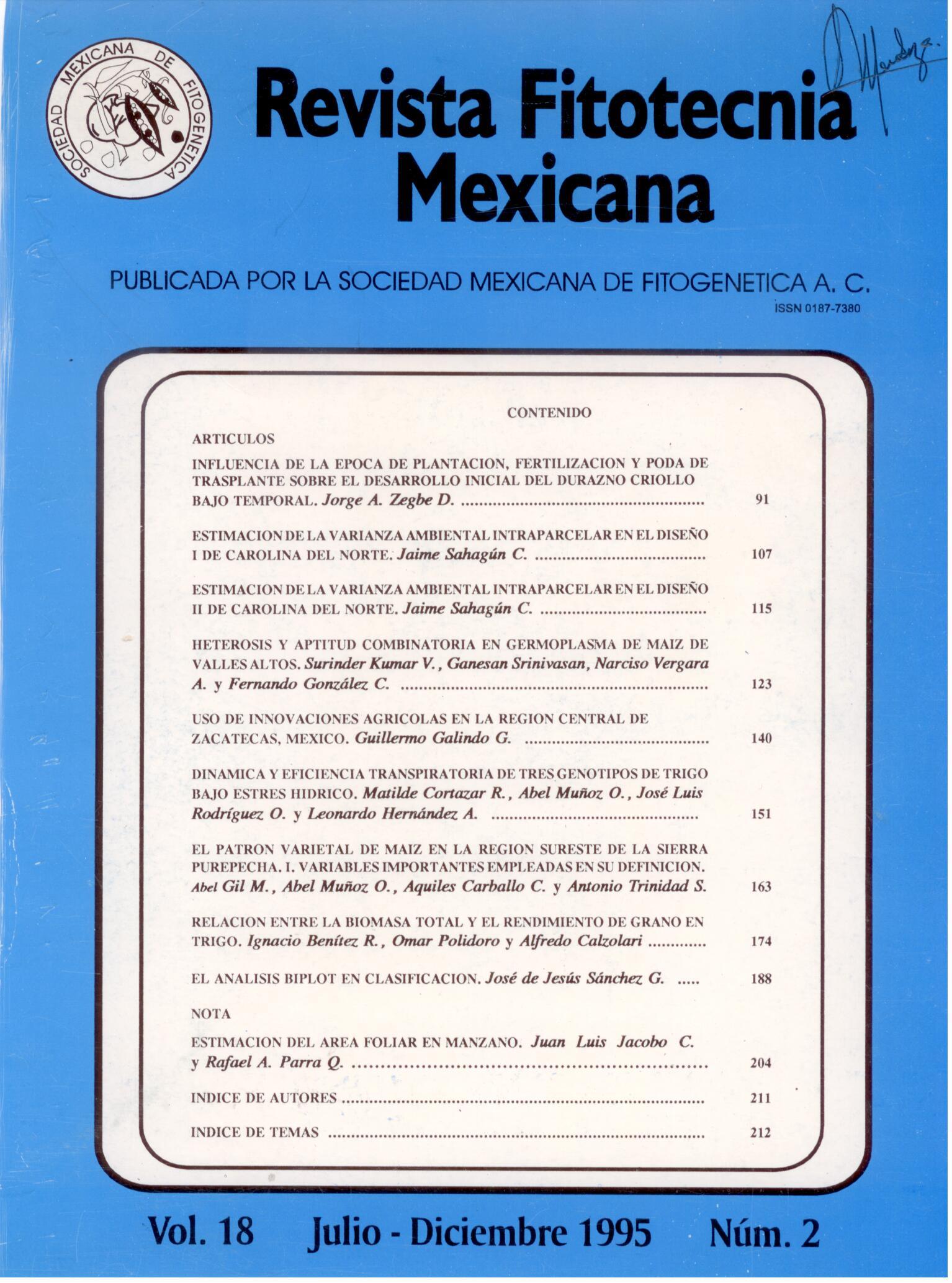RELATION BETWEEN TOTAL BIOMASS AND GRAIN YIELD IN WHEAT
Main Article Content
Abstract
Ten 10 spring wheat (Triticum aestivum L.) genotypes considered to have a high potential in total biomass and grain yield production, were used to evaluate the ability of several direct and indirect selection criteria for increasing the total biomass and grain yield of wheat. The study was conducted in 1993 and 1994 at the INTA-Pergamino Experimental Station, under rainfed conditions. In spite of the different climatic conditions which prevailed in the two cycles of evaluation, genotype x year interaction for total and vegetative biomass production was no significant, although grain yield x year and harvest index x year were significant. The ten genotypes
significantly differed in 14 measured caracters. Total biomass and vegetative biomass ranged from 12.5 to 7.9 and 7.7 to 4.8 t ha-1, respectively, in 1994, and from 10.6 to 7.8 and 9.3 to 6.6 t ha-1, respectively, in 1993. The genotypes that showed the highest potential for these two characters in both years, were significantly better in terms of number of kemels per m2, kernels per spikelet and plant height. According to these results, the following traits are suggested as selection criteria in a wheat breeding program: the daily rates of dry matter accumulation in the shoot and in the grain (from planting to maturity), vegetative biomass at heading, and plant height; all of them combined with a high number of kernels per spikelet in individual plants, or a high number of kernels per m2 if genotypes are evaluated under specific production systems

